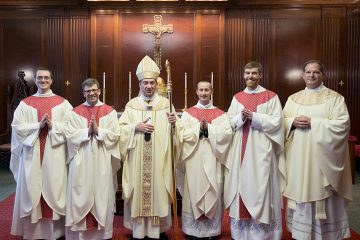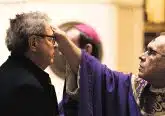A Closer Look: “Dignity Never Been Photographed”
Each October, beginning on the first Sunday, the Church in the U.S. observes Respect Life Month. While, of course, we should embrace and applaud this celebration, I wonder how helpful abstract concepts like “respecting life” are in helping us to stand as witnesses against an encroaching culture of death. In fact, such abstractions may actually hinder our ability to know, first, how we learn to respect life and, second, what, exactly, we should respect.
Individualist Moral Culture
First, to think about any moral issue in abstractions ill equips us to learn the habits, practices and virtues that make laudable concepts like respecting life intelligible. Of course, Catholics believe that moral principles are fixed and enduring, rooted as they are in the order of creation. And from these principles we derive rules of conduct, including rules related to respecting human life. But knowing these principles and rules is often not very useful in helping us to keep them. As St. Paul wrote to the Church at Rome, “What I do, I do not understand. For I do not do what I want, but I do what I hate.”
This is because, while moral rules are fixed in nature, we acquire moral knowledge in the concrete practices and habits of particular moral communities. As Catholics, we cannot properly learn what it means to respect life if our moral commitments are formed by the broad secular society in which most of us live our workday lives.
Ours is an individualist moral culture that teaches that our lives are radically separate from the lives of others, that we are nothing more than isolated, rights-bearing individuals. As such, to “respect life” means to leave other lives alone, as individuals pursue their own solitary preferences and secure their individual rights. In this story, to respect life is reduced to leaving me alone so I can do what I please. Unfortunately, this dominant story holds powerful sway over many of us Catholics, and it hinders us from learning the true habits and practices that lead us to have a proper respect for human lives. So while we know this is not a proper way to respect life, we often find our practices conforming to it. We do not do what we want, but what we hate.
Moral Community of the Church
This is very different from the moral community of the Church, formed by a vision of the dignity of the human person and the solidarity of all humankind. The Church is a moral community in which we learn that respecting life entails not indifference to the lives of others as they pursue their individual rights, but rather solicitude for others as we strive toward our common purpose of loving God and serving one another. This calls us not to live our lives isolated from others, but to be available to others.
Respect the Person
A second problem with the phrase “respect life” is that it tends to cause us to respect an idea, rather than to respect human persons, made in the image of God. We are not called to respect the abstract concept of “life,” but rather to respect the actual person whose life is a gift from God that only God may intend to take. To be made in the image of God means that we are endowed with inviolable dignity. And our mandate to love other persons – to respect life – is based in that dignity. But we do not respect the dignity; rather, we respect the person to whom that dignity attaches, and from whom it can never be taken.
In his song, “Dignity,” Bob Dylan wrote, “Somebody showed me a picture and I just had to laugh/Dignity never been photographed.” His point is that we do not see dignity; rather, we see persons whose dignity is inalienable. And it is those persons whom we are called to love, even when it is difficult to discern the dignity in their circumstances.
But if we make the mistake of looking for dignity rather than the person who possesses it, we often will not see anything at all. This is because some lives do not look very dignified. But we love that person anyway, because he or she is not the source of dignity; God is the source, and it is not ours to take from any person, no matter how undignified he may look.
Dignity has never been photographed, nor has it ever been loved. People are to be loved because of the dignity that is a gift from God; and we are called to be formed by a community that learns to love them, even when we cannot see that dignity.














